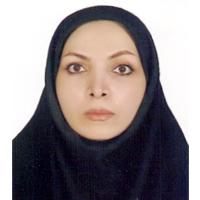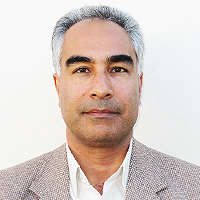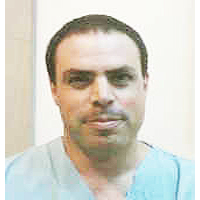Abstract
Research Article
A model of the 2014 Ebola virus: Evidence of West Africa
Nadhem Selmi*
Published: 02 May, 2019 | Volume 3 - Issue 1 | Pages: 010-015
Outbreaks of Ebola virus can cause substantial mortality in affected countries. The largest outbreak of Ebola to date is currently underway in West Africa, with 3944 cases reported as of September 5, 2014. For the sake of deriving a better understanding of the Ebola transmission dynamics, we have undertaken to revisit data from the initial spark of origin of the Ebola virus, which occurred in 1976 in Zaire (now Democratic Republic of Congo). By fitting a mathematical process to time series stratified by disease onset, outcome and source of infection, we have managed to estimate several epidemiological quantities, previously admitted to be too challenging to measure, including hospital and infected community contribution infection to the widespread transmission.
Read Full Article HTML DOI: 10.29328/journal.ijcv.1001004 Cite this Article Read Full Article PDF
Keywords:
Ebola 2014; Guinea; SEIR
References
- Diekmann O, Heesterbeek J. Mathematical Epidemiology of Infectious Diseases: Model-building, Analysis, and Interpretation. West Sussex: Wiley; 2000. Ref.: https://tinyurl.com/y59kcjsk
- Anderson RM, RM M. Infectious diseases of humans: Dynamics and Control. Oxford: Oxford University Press; 1991. Ref.: https://tinyurl.com/yyowvjv7
- Chowell G, Fenimore PW, Castillo-Garsow MA, Castillo-Chavez C. SARS outbreaks in Ontario, Hong Kong and Singapore: the role of diagnosis and isolation as a control mechanism. J Theor Biol. 2003; 224: 1-8. Ref.: https://tinyurl.com/y25dusmd
- Chowell G, Ammon CE, Hengartner NW, Hyman JM. Estimation of the reproductive number of the Spanish flu epidemic in Geneva, Switzerland. Vaccine. 2006; 24: 6747-6750. Ref.: https://tinyurl.com/y2bttwzo
- Hancock K, Veguilla V, Lu X, Zhong W, Butler EN, Sun H, et al. Cross-reactive antibody responses to the 2009 pandemic H1N1 influenza virus. N Engl J Med. 2009; 361: 1945-1952. Ref.: https://tinyurl.com/yysh3t8r
- Gustafsson L, Sternad M. Bringing consistency to simulation of population models--Poisson simulation as a bridge between micro and macro simulation. Math Biosci. 2007; 209: 361-385. Ref.: https://tinyurl.com/y5e87pmw
- Chowell G, Ammon CE, Hengartner NW, Hyman JM. Estimating the reproduction number from the initial phase of the Spanish flu pandemic waves in Geneva, Switzerland. Math Biosci Eng. 2007a; 4: 457-470. Ref.: https://tinyurl.com/y6x6bold
- Chowell G, Nishiura H, Bettencourt LM. Comparative estimation of the reproduction number for pandemic influenza from daily case notification data. J R Soc Interface. 2007b; 4: 155-166. Ref.: https://tinyurl.com/y4zeo8xd
- Longini IM, Jr., Halloran ME, Nizam A, Yang Y. Containing pandemic influenza with antiviral agents. Am J Epidemiol. 2004; 159: 623-633. Ref.: https://tinyurl.com/y2nd3pjs
- Chowell G, Miller MA, Viboud C. Seasonal influenza in the United States, France, and Australia: transmission and prospects for control. Epidemiol Infect. 2008; 136: 852-864. Ref.: https://tinyurl.com/yyc2m2zo
- Fraser C, Donnelly CA, Cauchemez S, Hanage WP, Van Kerkhove MD, Hollingsworth TD, et al. Pandemic potential of a strain of influenza A (H1N1): early findings. Science. 2009; 324: 1557-1561. Ref.: https://tinyurl.com/y2ypzwmd
- Cauchemez S, Donnelly CA, Reed C, Ghani AC, Fraser C, Kent CK, et al. Household transmission of 2009 pandemic influenza A (H1N1) virus in the United States. N Engl J Med. 2009; 361: 2619-2627. Ref.: https://tinyurl.com/y4vhlpon
Figures:

Figure 1
Similar Articles
Recently Viewed
-
Cognitive behavioral therapy treatment for drug addictionAlya Attiah Alghamdi*. Cognitive behavioral therapy treatment for drug addiction. J Addict Ther Res. 2023: doi: 10.29328/journal.jatr.1001025; 7: 005-007
-
Dental Age Estimation using the Cameriere Method in Different Countries: A ReviewDesprika Youhana Sitio*, Ghora March Eka Solehuddin, Grace Sisilia Panjaitan. Dental Age Estimation using the Cameriere Method in Different Countries: A Review. J Forensic Sci Res. 2024: doi: 10.29328/journal.jfsr.1001062; 8: 035-039
-
Unconventional powder method is a useful technique to determine the latent fingerprint impressionsHarshita Niranjan,Shweta Rai,Kapil Raikwar,Chanchal Kamle,Rakesh Mia*. Unconventional powder method is a useful technique to determine the latent fingerprint impressions. J Forensic Sci Res. 2022: doi: 10.29328/journal.jfsr.1001035; 6: 045-048
-
Difference between conventional and modern methods for examination of fingerprintsAmbati Ramesh Babu*. Difference between conventional and modern methods for examination of fingerprints. J Forensic Sci Res. 2021: doi: 10.29328/journal.jfsr.1001025; 5: 037-040
-
Gilbert’s Syndrome Revealed by Hepatotoxicity of ImatinibImen Ben Amor*,Imen Frikha,Moez Medhaffer,Moez Elloumi. Gilbert’s Syndrome Revealed by Hepatotoxicity of Imatinib. Ann Clin Gastroenterol Hepatol. 2025: doi: 10.29328/journal.acgh.1001049; 9: 001-003
Most Viewed
-
Evaluation of Biostimulants Based on Recovered Protein Hydrolysates from Animal By-products as Plant Growth EnhancersH Pérez-Aguilar*, M Lacruz-Asaro, F Arán-Ais. Evaluation of Biostimulants Based on Recovered Protein Hydrolysates from Animal By-products as Plant Growth Enhancers. J Plant Sci Phytopathol. 2023 doi: 10.29328/journal.jpsp.1001104; 7: 042-047
-
Sinonasal Myxoma Extending into the Orbit in a 4-Year Old: A Case PresentationJulian A Purrinos*, Ramzi Younis. Sinonasal Myxoma Extending into the Orbit in a 4-Year Old: A Case Presentation. Arch Case Rep. 2024 doi: 10.29328/journal.acr.1001099; 8: 075-077
-
Feasibility study of magnetic sensing for detecting single-neuron action potentialsDenis Tonini,Kai Wu,Renata Saha,Jian-Ping Wang*. Feasibility study of magnetic sensing for detecting single-neuron action potentials. Ann Biomed Sci Eng. 2022 doi: 10.29328/journal.abse.1001018; 6: 019-029
-
Pediatric Dysgerminoma: Unveiling a Rare Ovarian TumorFaten Limaiem*, Khalil Saffar, Ahmed Halouani. Pediatric Dysgerminoma: Unveiling a Rare Ovarian Tumor. Arch Case Rep. 2024 doi: 10.29328/journal.acr.1001087; 8: 010-013
-
Physical activity can change the physiological and psychological circumstances during COVID-19 pandemic: A narrative reviewKhashayar Maroufi*. Physical activity can change the physiological and psychological circumstances during COVID-19 pandemic: A narrative review. J Sports Med Ther. 2021 doi: 10.29328/journal.jsmt.1001051; 6: 001-007

HSPI: We're glad you're here. Please click "create a new Query" if you are a new visitor to our website and need further information from us.
If you are already a member of our network and need to keep track of any developments regarding a question you have already submitted, click "take me to my Query."


















































































































































